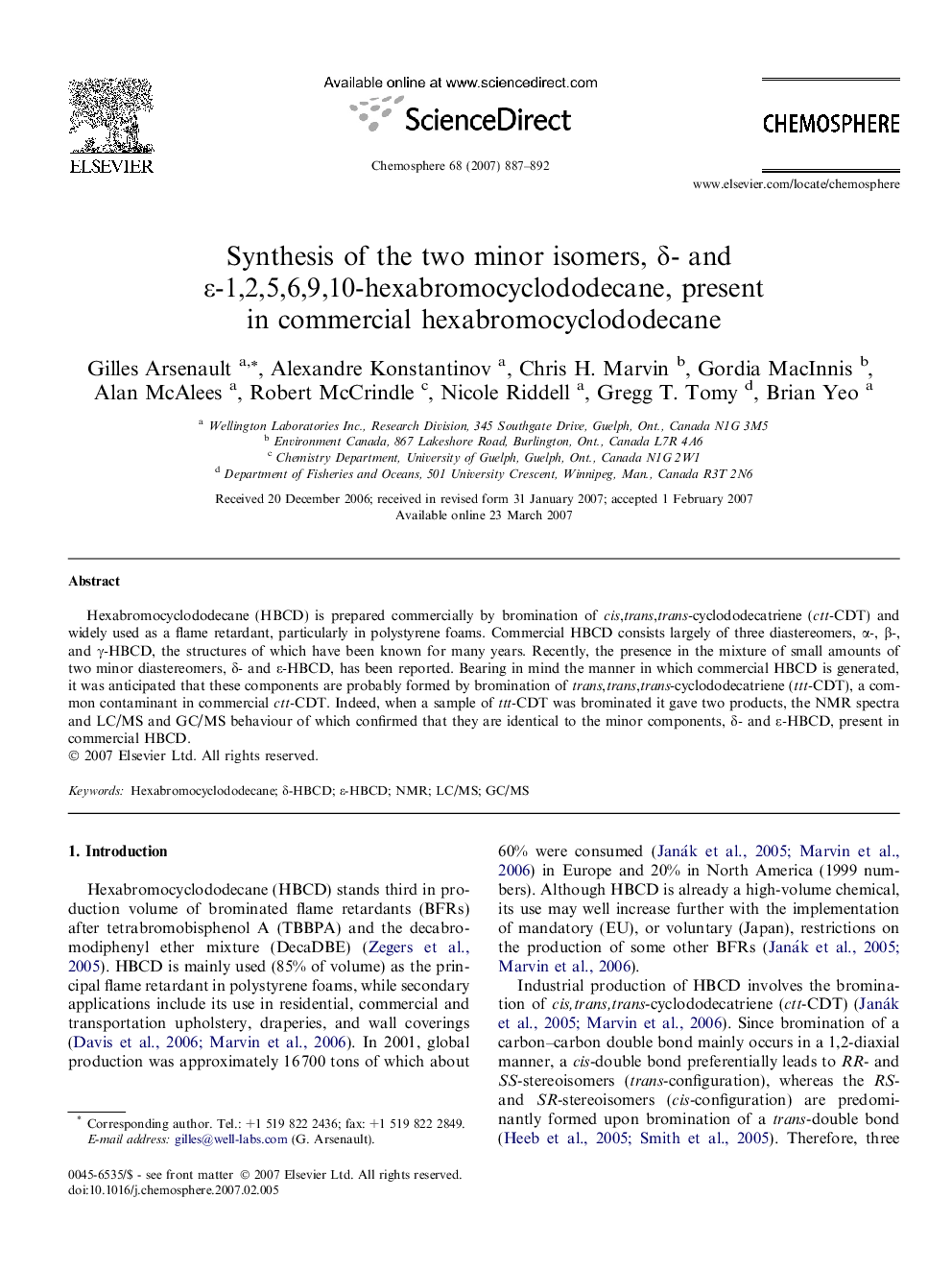| کد مقاله | کد نشریه | سال انتشار | مقاله انگلیسی | نسخه تمام متن |
|---|---|---|---|---|
| 4415445 | 1307747 | 2007 | 6 صفحه PDF | دانلود رایگان |

Hexabromocyclododecane (HBCD) is prepared commercially by bromination of cis,trans,trans-cyclododecatriene (ctt-CDT) and widely used as a flame retardant, particularly in polystyrene foams. Commercial HBCD consists largely of three diastereomers, α-, β-, and γ-HBCD, the structures of which have been known for many years. Recently, the presence in the mixture of small amounts of two minor diastereomers, δ- and ε-HBCD, has been reported. Bearing in mind the manner in which commercial HBCD is generated, it was anticipated that these components are probably formed by bromination of trans,trans,trans-cyclododecatriene (ttt-CDT), a common contaminant in commercial ctt-CDT. Indeed, when a sample of ttt-CDT was brominated it gave two products, the NMR spectra and LC/MS and GC/MS behaviour of which confirmed that they are identical to the minor components, δ- and ε-HBCD, present in commercial HBCD.
Journal: Chemosphere - Volume 68, Issue 5, June 2007, Pages 887–892